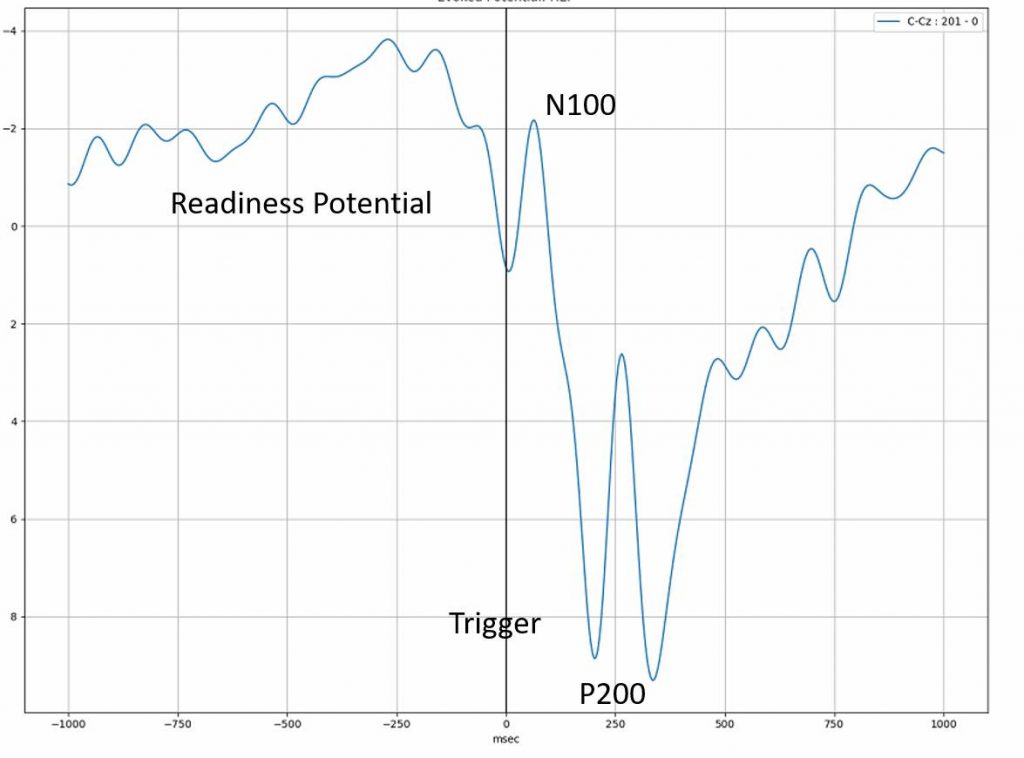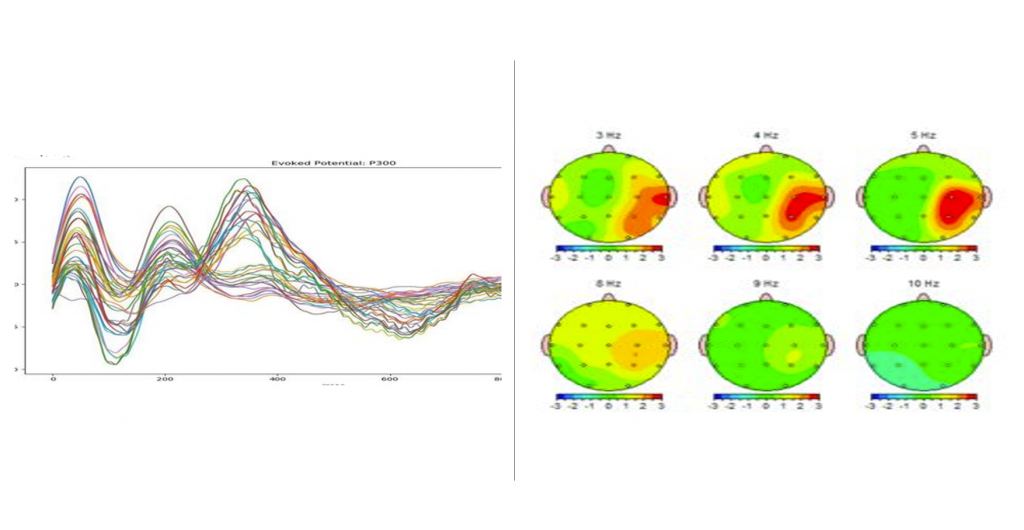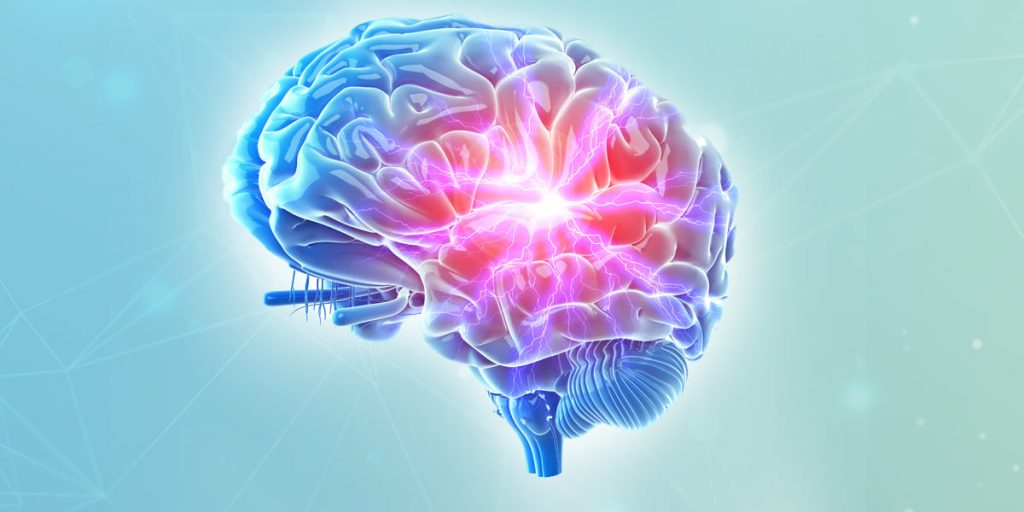A New Frontier in Brain Training
In recent years, the field of neurofeedback has seen remarkable advancements in the development of new technologies and techniques for training the brain. One such technique is the analysis of Bereitschaftspotentials, also known as readiness potentials, which can provide valuable insights into cognitive function and help to improve neurofeedback outcomes.
What are Bereitschaftspotentials?
Bereitschaftspotentials are a type of brain signal that are detected using electroencephalography (EEG). They are a measure of the brain’s preparatory activity prior to the execution of a voluntary movement or action. By measuring these potentials, neurofeedback therapists can gain insight into an individual’s cognitive abilities and use that information to develop targeted treatment plans.
IFEN Lab, a neurofeedback technology company, has been at the forefront of this emerging field. Three years ago, they started a collaboration with Prof. Giuseppe Chiaranza, one of the leading experts in the analysis of Bereitschaftspotentials. Together with well-known neurologist Dr. Christoph Garner, they developed an ERP measuring system that allows for the precise measurement of these potentials.
The new system developed by IFEN Lab is designed to make the process of measuring Bereitschaftspotentials as simple and easy as possible for the user. It can be used by anyone, regardless of their level of expertise, and provides valuable insights into cognitive function that can be used to develop more effective neurofeedback treatment plans.
One of the major benefits of using the analysis of Bereitschaftspotentials in neurofeedback is that it provides a more complete picture of cognitive function than traditional EEG or QEEG measures. EEG measures the electrical activity of the brain, while QEEG provides a map of that activity across different areas of the brain. However, Bereitschaftspotentials provide a more direct measure of the brain’s preparatory activity and can provide valuable insights into cognitive function that are not available through EEG or QEEG measures alone.
Another major benefit of using the analysis of Bereitschaftspotentials in neurofeedback is that it allows for more precise targeting of treatment. By measuring these potentials, neurofeedback therapists can gain insights into the specific areas of the brain that are most in need of training. This can help to make neurofeedback therapy more efficient and effective, leading to better treatment outcomes.
In addition to its clinical applications, the analysis of Bereitschaftspotentials can also be used in other settings, such as sports performance training. Athletes who have better Bereitschaftspotentials may be more skilled in executing complex movements, while musicians with better Bereitschaftspotentials may be more accurate in their timing and rhythm.
Overall, the analysis of Bereitschaftspotentials represents a new frontier in brain training and has the potential to revolutionize the field of neurofeedback. By providing a more complete picture of cognitive function and allowing for more precise targeting of treatment, it can help to improve treatment outcomes and provide valuable insights into brain function that were previously unavailable.
IFEN Lab’s new ERP measuring system is a major step forward in this emerging field, providing a simple and easy-to-use tool for measuring these important brain signals. By combining the expertise of leading researchers and clinicians, IFEN Lab has developed a technology that has the potential to help people improve their cognitive function and achieve their treatment goals more effectively than ever before.
In conclusion, the analysis of Bereitschaftspotentials is a promising new technique in the field of neurofeedback that has the potential to transform the way we think about brain training. IFEN Lab’s collaboration with Prof. Giuseppe Chiaranza and Dr. Christoph Garner has resulted in the development of a groundbreaking new ERP measuring system that can provide valuable insights into cognitive function and help to improve treatment outcomes. With continued research and development.

QEEG and ERP why we need both measurements in Neurofeedback and in Practice: ERPs (Event-Related Potentials) and QEEG (Quantitative Electroencephalography) are two types of brain signal measures that are commonly used in cognitive and clinical neuroscience. While both measures can provide valuable insights into brain function, there are several benefits to using ERPs over QEEG.
One of the main benefits of using ERPs is that they provide a more direct measure of brain function. ERPs are a type of brain signal that are triggered by a specific event or stimulus, such as the presentation of a visual or auditory cue. This means that ERPs can provide more precise information about the neural processes that are involved in specific cognitive tasks, such as attention, memory, and perception.
In contrast, QEEG provides a more global measure of brain activity, showing the overall patterns of electrical activity in the brain. While this can be useful for identifying broad patterns of brain activity, it can be more difficult to identify specific cognitive processes or functions.
Another benefit of using ERPs is that they can provide more precise temporal information. ERPs are time-locked to specific events, which means that the precise timing of neural processes can be measured with high accuracy. This can be particularly important for tasks that require precise timing, such as speech processing or motor coordination.
QEEG, on the other hand, provides more spatial information, showing the overall distribution of electrical activity across different regions of the brain. This can be useful for identifying broad patterns of brain activity and for identifying potential areas of dysfunction.
One final benefit of using ERPs is that they are less affected by artifacts than QEEG. Artifacts are unwanted electrical signals that can be caused by eye movements, muscle activity, or other external sources. These artifacts can be particularly problematic for QEEG, as they can obscure or distort the underlying brain signals. In contrast, ERPs are less affected by artifacts, as they are time-locked to specific events and can be more easily distinguished from other electrical activity.
In summary, while both ERPs and QEEG can provide valuable insights into brain function, there are several benefits to using ERPs over QEEG. ERPs provide a more direct measure of brain function, more precise temporal information, and are less affected by artifacts. This makes them a valuable tool for cognitive and clinical neuroscience research, and for developing more effective interventions for cognitive and neurological disorders.

Why this is not only for research. It is time to use this technology now.
While the analysis of event-related potentials (ERPs) has long been a valuable tool in cognitive and clinical neuroscience research, it is now time to start using this technology in more practical settings. With advances in EEG technology and data processing, ERPs can be easily and accurately measured, making them an increasingly accessible tool for clinicians and practitioners in a wide range of fields.
One practical application of ERP technology is in the assessment and treatment of cognitive and neurological disorders. By measuring ERPs in individuals with disorders such as attention deficit hyperactivity disorder (ADHD) or traumatic brain injury (TBI), clinicians can gain valuable insights into the underlying neural processes and develop targeted treatment plans.
In the case of ADHD, for example, ERPs can be used to measure cognitive processes such as attention and inhibitory control. By measuring the P3 component of the ERP, which is associated with attention and working memory, clinicians can gain insight into an individual’s ability to sustain attention and process information. This information can be used to develop targeted interventions, such as neurofeedback training, that can help improve attention and cognitive performance.
In the case of TBI, ERPs can be used to measure cognitive processes such as executive function and memory. By measuring the N2 and P3 components of the ERP, which are associated with these processes, clinicians can gain insight into the extent of cognitive impairment and develop targeted interventions to address specific deficits.
ERPs can also be used in a variety of other practical settings, such as sports performance training, where they can provide valuable insights into the neural processes involved in complex motor movements or in music training where they can help improve timing and rhythm.
In addition to the practical applications of ERP technology, advances in data processing and machine learning have made it possible to develop more efficient and effective methods for analyzing ERP data. This has opened up new possibilities for using ERP technology in real-world settings and has the potential to transform the way we think about cognitive and neurological disorders.
In conclusion, while the analysis of event-related potentials (ERPs) has long been a valuable tool in cognitive and clinical neuroscience research, it is now time to start using this technology in more practical settings. Advances in EEG technology and data processing have made it easier and more accessible for clinicians and practitioners to use ERPs in the assessment and treatment of cognitive and neurological disorders, as well as in other settings such as sports performance training or music training. With continued research and development, ERP technology has the potential to revolutionize the way we think about brain function and improve outcomes for individuals with a wide range of cognitive and neurological challenges.

